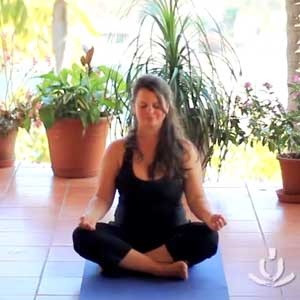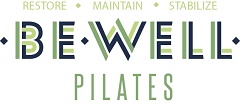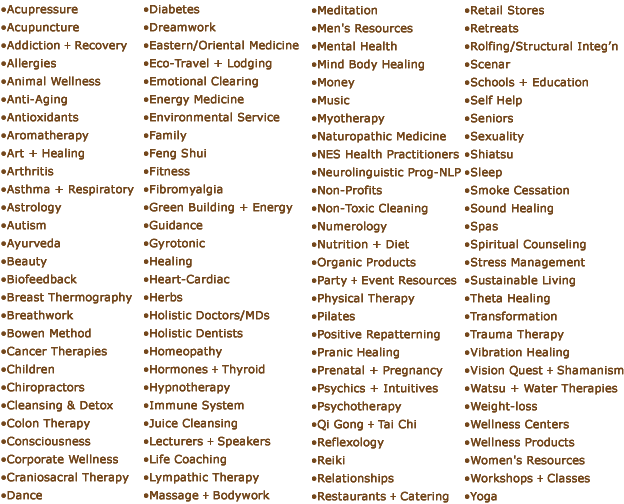Santa
Barbara Pilates Studios & Teachers in Santa Barbara, Ojai
& Ventura |
1
N. Calle Cesar Chavez, #210 805-334-0216 Mojo
Pilates
deliver Pilates
classes in Bolton at a couple of great venues. Train International are delivering a new Pilates instructor course and personal training courses in London and Edinburgh. •Pilates
DVDs, Books, Equipment •Pilates South Florida - Fort Lauderdale - our goal is to bring about positive change to each individual whatever your athletic ability.
|
Definition & History of Pilates Pilates is a physical fitness system developed in the early 20th century by Joseph Pilates in Germany. As of 2005, there are 11 million people who practice the discipline regularly and 14,000 instructors in the United States. Pilates called his method Contrology, because he believed his method uses the mind to control the muscles. The program focuses on the core postural muscles which help keep the body balanced and which are essential to providing support for the spine. In particular, Pilates exercises teach awareness of breath and alignment of the spine, and aim to strengthen the deep torso muscles. History of Pilates Pilates was designed by Joseph Pilates, a gymnast born in Germany of partly Greek ancestry. He designed a system of exercises during the First World War with the proposal to improve the rehabilitation program for the many returning veterans. Joseph Pilates believed that mental and physical health are inter-related. He recommended a few precise movements emphasizing control and form to aid injured soldiers in regaining their health by strengthening, stretching, and stabilizing key muscles. Pilates created "The Pilates Principles" to condition the entire body: proper alignment, centering, concentration, control, precision, breathing, and flowing movement. Joseph Pilates wrote two books related to the Pilates method: Return to Life through Contrology (1928) and Your Health: A Corrective System of Exercising That Revolutionizes the Entire Field of Physical Education (1934). Pilates claimed that his method contains both philosophical and theoretical foundations. He claimed that his system is not merely a collection of exercises, but a method developed and refined over more than eighty-five years of use and observation. Principles According to practitioners, the central aim of Pilates is to attempt to create a fusion of mind and body, so that without even engaging the mind, the body will move with economy, grace, and balance. Alignment: Correct postural alignment of the skeletal structure is crucial to the practice of Pilates, not only to get the best out of the exercise, but also to prevent injury. Achieving optimal alignment starts with positioning the pelvis, ribcage, shoulder girdle, and head in a neutral alignment with respect to each other, and then utilizing all the stabilization muscles to maintain that alignment while performing the exercises. Correct alignment in Pilates also means limiting range of motion of the appendages so as to not push the joints beyond where the ligaments and connective tissue are strained. Breathing: Joseph Pilates believed in circulating the blood so that it could awaken all the cells in the body and carry away the wastes related to fatigue. For the blood to do its work properly, he maintained, it has to be charged with oxygen and purged of waste gases through proper breathing. By this standard, if you stop breathing during exercise, there is an error in your practice. Full and thorough inhalation and exhalation are purportedly a part of every Pilates exercise. Pilates saw forced exhalation as the key to full inhalation. “Squeeze out the lungs as you would wring a wet towel dry,” he is reputed to have said.[citation needed] Pilates breathing should be done with concentration, control, and precision. Proper and effective breathing, practitioners assert, not only oxygenates the muscles, but also reduces tension in the upper neck and shoulders. Pilates breathing is described as a posterior lateral breathing, meaning that the practitioner is instructed to breathe deep into the back and sides of his or her rib cage. When practitioners exhale, they are instructed to note the engagement of their deep abdominal and pelvic floor muscles and maintain this engagement as they inhale. Pilates attempts to properly coordinate this breathing practice with movement, including breathing instructions with every exercise. Joseph Pilates stated, “Even if you follow no other instructions, learn to breathe correctly.” Centering: Pilates called the very large group of muscles in the center of the body – encompassing the abdomen, lower back, hips, and buttocks – the “powerhouse." All energy for Pilates exercises is said to begin from the powerhouse and flow outward to the limbs. In other words, the Pilates technique asserts that physical energy exerted from the center should coordinate movements of the extremities. Pilates felt that it was important to build a strong powerhouse in order to rely on it in daily living. Modern instructors call the powerhouse "The Core." Concentration: Pilates demands intense focus. For instance, the inner thighs and pelvic floor may be assessed when doing a standing exercise that tones the triceps. Beginners are instructed to pay careful attention to their bodies, building on very small, delicate fundamental movements and controlled breathing. In 2006, at the Parkinson Center of the Oregon Health and Science University in Portland, Oregon, the concentration factor of the Pilates method was being studied in providing relief from the degenerative symptoms of Parkinson's disease. Control: Joseph Pilates built his method on the idea of muscle control. To him, that meant no sloppy, uncontrolled movements. Precision: Practitioners assert that every movement in the Pilates method has a purpose. Every instruction is considered vitally important to the success of the whole. To leave out any detail is believed to forsake the intrinsic value of the exercise. The focus is on doing one precise and perfect movement, rather than many halfhearted ones. The goal is for this precision to eventually become second nature, and carry over into everyday life as grace and economy of movement. A qualified Pilates instructor is expected to understand the technique well enough to adapt it to the real-world capabilities of his or her students. Students with physical disabilities, for example, should be given a Pilates regimen intended to improve their methods of physically compensating for their ailment. Flow or efficiency of movement: Movement is expected to be kept continuous between exercises through the use of appropriate transitions. Once precision has been achieved, the exercises are intended to flow within and into each other in order to build strength and stamina. Flexibility: A controlled experiment gives some support to claims that pilates enhances flexibility. Use of Apparatus in Pilates The original Pilates repertoire was 34 exercises
done on the floor on a padded mat (matwork), but Joseph Pilates
later invented several pieces of apparatus, each with its own repertoire
of exercises. Most of the repertoire done on the various pieces
of Pilates apparatus is resistance training since it makes use of
springs to provide additional resistance. Using springs results
in "progressive resistance", meaning the resistance increases
as the spring is stretched.
The most common piece of apparatus is the Reformer, but other apparatus used in a modern Pilates studio includes the Cadillac (also called the Trapeze Table), the Wunda Chair, and the Ladder Barrel. Lesser used apparatus includes the Spine Corrector (Step Barrel), the Guillotine Tower, the Arm Chair, the Ped-a-Pul (Pedi-Pole), and the Foot Corrector. There are also many props used in Pilates including the Magic Circle, invented by Joseph Pilates, small weighted balls, foam rollers, large exercise balls, rotating disks, and resistance bands. However, some in the Pilates community, particularly the Pilates Method Alliance, maintains that exercises done on any piece of apparatus not designed by Joseph Pilates, such as large or small exercise balls, should not be called Pilates. Whether using the additional resistance of springs on Pilates apparatus, or the constant resistance of gravity in mat work, the Pilates repertoire builds strength, develops proper alignment and posture, and increases flexibility. from wikipedia.org |
![]()
all website
content copyright © 2003-2014
Santa Barbara Wellness Directory
Santa Barbara, CA 93101
info@SBWellnessDirectory.com
~ 805-722-5729
Santa
Barbara Website Design by Artemis Studios ![]() Santa Barbara
Website Marketing
Santa Barbara
Website Marketing





